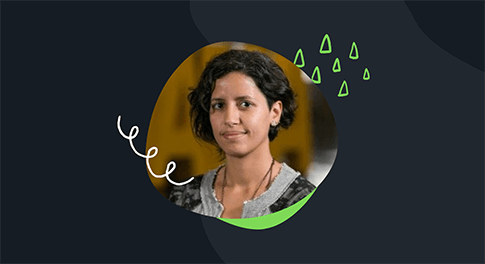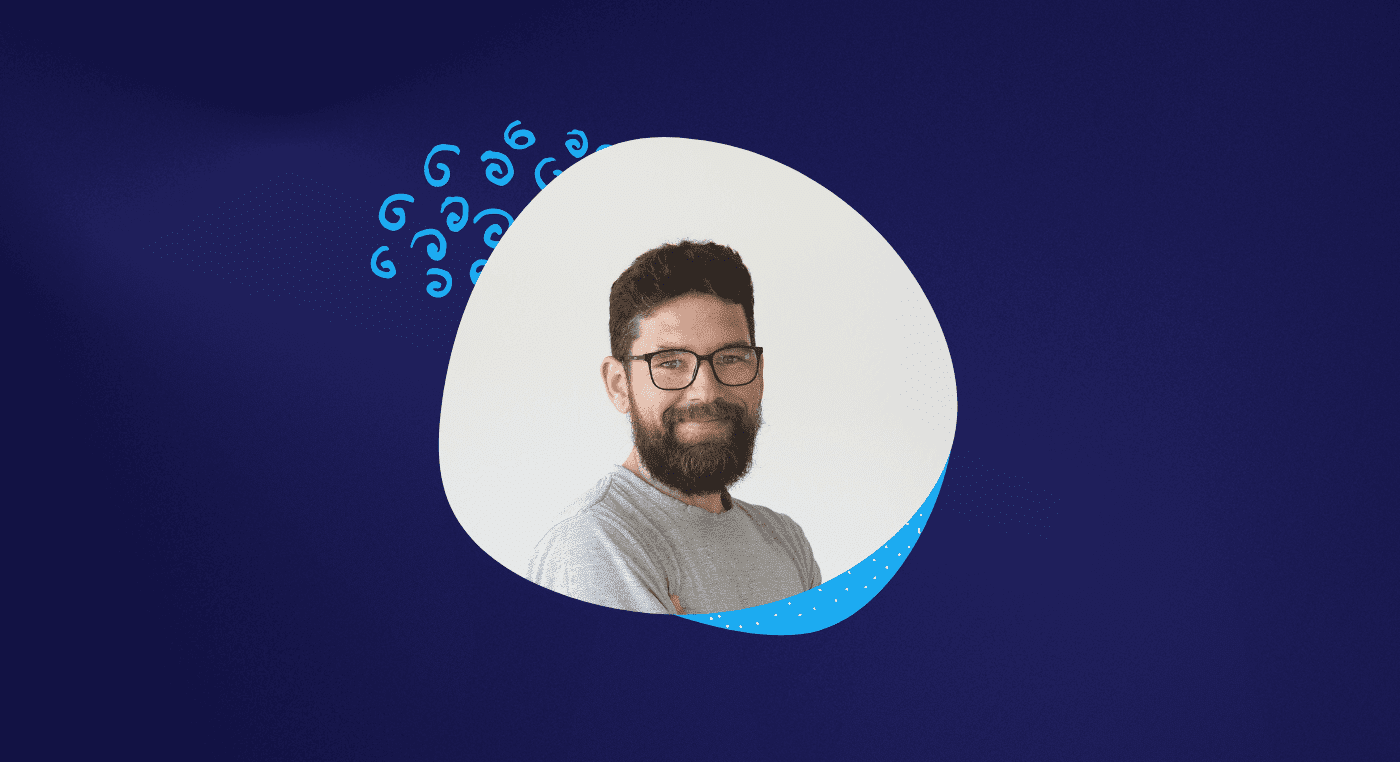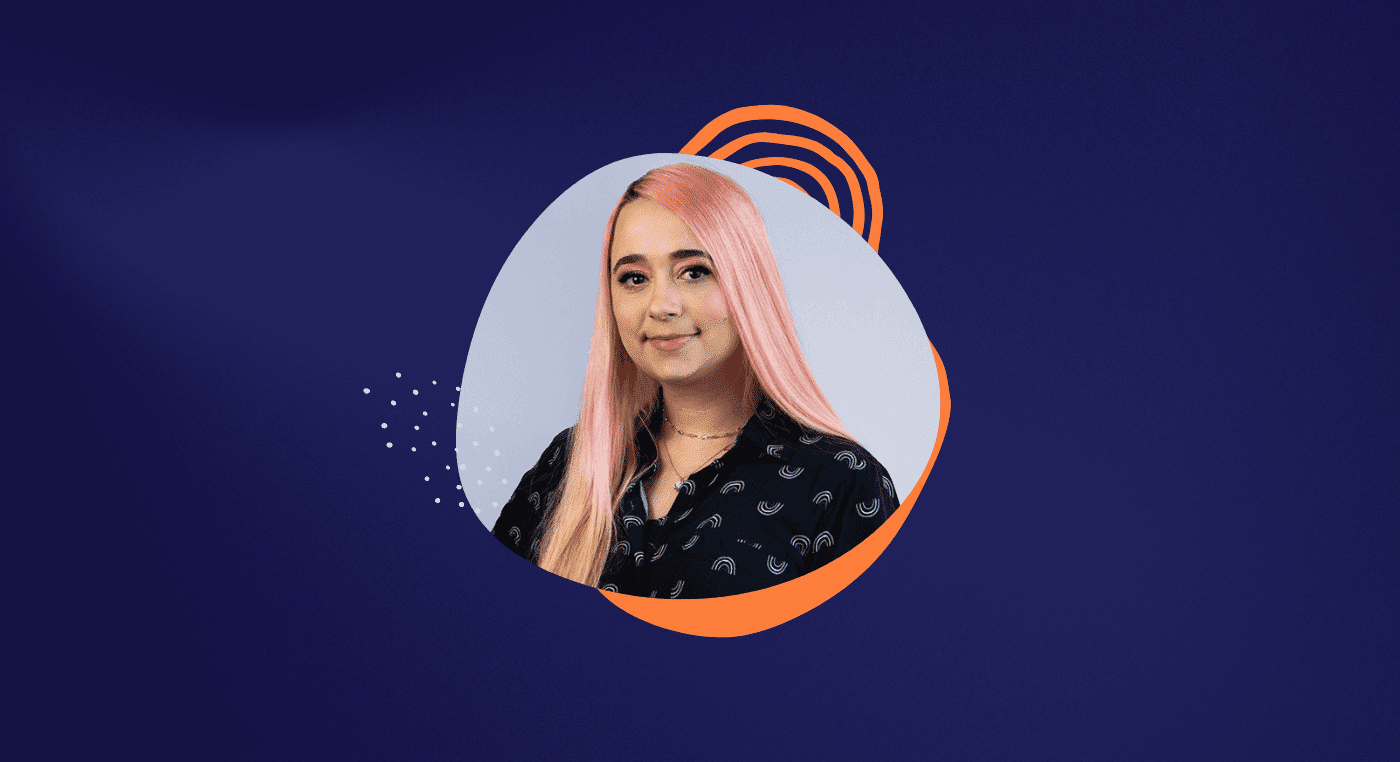Luka, an advertising major, explains that she finds the UX Design work model particularly appealing. She enjoys collaborating with a diverse, cross-functional team that maintains regular communication.
Additionally, Luka offers helpful advice for individuals interested in transitioning into the field of UX design!
Luka, please tell us about your background before pivoting to UX Design.
After obtaining my degree in advertising, I initially pursued a career as an Art Director. However, I didn’t like the work environment of big agencies, so I started working at smaller places, doing a little bit of everything.
Eventually, I went to bigger agencies and got jobs in some really nice places. But it confirmed that I didn’t like the advertising culture so much, even though I liked my job.
So I decided to see what I could do with my experience as an Art Director and started working in a consulting company. We worked a lot with design thinking, a methodology that I found very interesting.
I started to study more about the subject, and in this search for information, I came across UX Design and really got into it!
I started looking for places where I could learn more and found Aela’s website – the rest is history, and I will tell you a little bit about it during this interview.
Reading Tip: The Importance of Psychology in UX Design
What did you bring from Art Direction to UX Design?
I think a lot of the letting go of ideas – if I created some solution that I thought would be super cool and someone said no, that’s fine, let’s rethink and understand how we can improve this creation. This was something very important that I learned from advertising.
Another important lesson I took to UX was soft skills – to be able to talk to the client and understand their pains and not the solution they are looking for. All the relationship issues, working in a team, with people that can generate conflicts, among others.

Could you tell us a bit about your current job as a UX Designer?
I am a UX Designer at Indra, a technology solutions company providing consulting services. There, we have a multidisciplinary team.
The internal system we are working on is complex, so we divide our work into parts to tackle it efficiently, and the UX is present in almost all parts.
We set up a group with the client, the Product Owner, the Developer, and other colleagues, to understand what the system needs to do in each part, and my part is to put it on the screen. So, to summarize, my job is to understand the needs and figure out how to transfer this from paper to the final product.
We also work extensively with Agile methodology, like Scrum, and Kanban. I studied these methodologies a lot when I was in the process of applying for the position, so I didn’t have much trouble adapting when I joined, even though it was the first time I was working with them.
Reading Tip: Why Are Balanced Teams So Important To UX?
In your opinion, does a person who wants to transition to UX need to study these methodologies, or is having general knowledge enough?
I think that if you are starting in a junior position, it’s interesting to do some research so that you already have a good level of understanding before working with these methodologies. Other than that, it will not prevent you from being hired.
They know your level, and they know what to expect from you. If you work with a multidisciplinary team, it’s likely that other people won’t know all these methodologies in depth, either. Still, it’s nice to have superficial knowledge to make your job easier.
That’s if you are working in a junior position. You must know the methodologies if you are looking for a senior position.

What challenges are you facing coming from a different area than UX?
I think the biggest difference is not working with Photoshop constantly. The Adobe package was everything in my life when I worked in advertising; now, it’s nothing.
I was already working a lot with the Mastering Interface Design (MID) projects, so I can say that I was somewhat prepared for this change.
The difference that stood out to me the most was working in a real design team.
The experience I had was everyone working on their own, with their own autonomy, a discussion when it was time to deliver the product, and that was it.
But not here; everyone is always working together, exchanging ideas and knowledge with the rest of the team. This is what changed the most in my day-to-day work life.
Reading Tip: User Interview: Keys to Gather Insightful Information
How was the process until you got this opportunity as a UX Designer?
I consider part of this achievement everything that happened since I decided to switch to UX Design.
I had to save up money, so I could focus only on studying, quit my job, start the Mastering Interface Design (MID), and study all day long.
Three months after starting the course, I felt my portfolio was good enough and started applying for some UX roles.
I started to get my first interviews, but I heard a lot of “No’s” along the way, sometimes because of lack of experience – many of these positions were looking for people who had been in the field longer, so I really couldn’t do anything other than keep on studying.
I think the main tips are: analyze well the jobs that are offered, check which ones suit you, try to get as much as you can out of the application, and stay calm during the interview to be able to answer the questions calmly.
Can you identify the factors that led you to get hired as a UX Designer at Indra?
It was a combination of two things. One was that the person responsible for hiring me was a Mastering Interface Design (UX) student. He asked for referrals to the Aela mentors, who passed on my name and praised my work.
This has also helped boost my confidence in the interview.
Having a well-prepared portfolio was also essential! It’s no use just having pretty screenshots; in UX Design, it’s very important to have the whole design process as detailed as possible, explaining how you got to the final result.

How do you think Aela helped you transition to UX Design?
I think the most important thing that Aela taught me during the Mastering Interface Design (MID) was the need to show the step-by-step process until you get to the final result.
You need to deliver a beautiful screen, but if you don’t have a strong process behind it, it won’t work.
And up until now, no challenge has taken me by surprise or made me anxious. I think I’ve gotten to this point pretty confident of my abilities, especially with the help of the Aela community. It’s been a pretty smooth process for me!
If you could go back in time, what advice would you give yourself when you were first starting to transition to UX?
After finishing my Web Design course, I would like to tell myself: “Focus on that! Leave advertising and stay in this area”.
If I had followed that advice, I would be much further ahead by now.
For those who are going to transition, my tip is to study!
Do a lot of projects to improve your portfolio, pay close attention when describing your projects, and detail your step-by-step and how you think as much as possible.

To wrap up the interview, what are your plans for the future?
Currently, I want to finish my Mastering Interface Design (MID) program. Looking ahead, I really want to get a position that allows me to work from home.
As for right now, I want to improve myself as much as possible! I still have a lot to learn that will help me achieve my career goals later on.

Reading Tip: Remote Work: What is the Outlook During and After the Pandemic?







